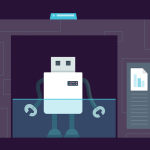
When it comes to Data Loss Prevention (DLP), you can’t afford to take any shortcuts. Believing that there are situations that couldn’t happen to you and that certain things are better left to chance is a huge mistake. Technology is definitely a godsend in today’s fast-paced society, but it can also be our undoing if the proper security precautions are not taken.
So where would you need to start to ensure that no valuable information is leaked? Well, getting your facts right is the best thing to do because you won’t make any crucial mistakes if you know what you are doing. Here are some common misconceptions you shouldn’t pay heed to:
1. Data loss prevention is too overwhelming, especially for small companies
Many business owners fall into the trap of believing that going with a DLP system means their entire company needs to start focusing all their efforts on the transition at the same time. So, it’s pretty easy to see why some people get intimidated at the mere thought of revamping their data security protocols.
Your best bet is to first start with a single document category, one you find to be particularly at risk. Once all the protocols are in place and everything is running smoothly, you can start working your way up to the next category, and so on.
However, it doesn’t have to be like this. If Data Loss Prevention systems are implemented in a thorough and organized fashion, you won’t have to worry about it getting too overwhelming. Also, easy to use solutions are now available. Your best bet is to first start with a single document category, one you find to be particularly at risk. Once all the policies are in place and everything is running smoothly, you can start working your way up to the next category of data to protect, and so on.
2. Data loss prevention will put a serious strain on the network
Once again, this doesn’t have to be the case if it is done right. DLP is the kind of technology that needs fine-tunning for policies and configuration. An efficient DLP system allows customized setup according to the available resources. For example, logs like what files are being transferred, through which channel, what kind of data is considered confidential, etc can be configured easily depending on the internal policies and the company infrastructure. This way, not only won’t there be any excessive network latency to worry about, but the whole process will benefit from improved visibility and control.
3. DLP is actually very slow and negatively impacts productivity
This is a huge misconception that many people who aren’t informed about the latest developments tend to believe. Yes, initial DLP protocols and systems used to be like this, but that was a long time ago. Plenty of efforts have been made to improve this technology and make it as convenient as possible. As long as policies are established taking into account the required level of authorization for each entity, meaning users, computers, departments, productivity will not be affected.
There is a certain granularity in DLP solutions, which gives relevance to the policy builder and provides the possibility of denying the transfer of only confidential data by the unauthorized users. Employees that should be working with that data can be only monitored and further measures can be taken just in case policy violations happen. The hassle that came with the previous versions of Data Loss Prevention tools can be avoided.
Making everything easier
Want to stay up-to-date with the latest in technology developments and DLP? Then remember to always revisit our blog for any new articles.
Also, don’t forget to check out our products. You will definitely find something that will suit your business’s needs in terms of data loss prevention.
Download our free ebook on
Data Loss Prevention Best Practices
Helping IT Managers, IT Administrators and data security staff understand the concept and purpose of DLP and how to easily implement it.
















